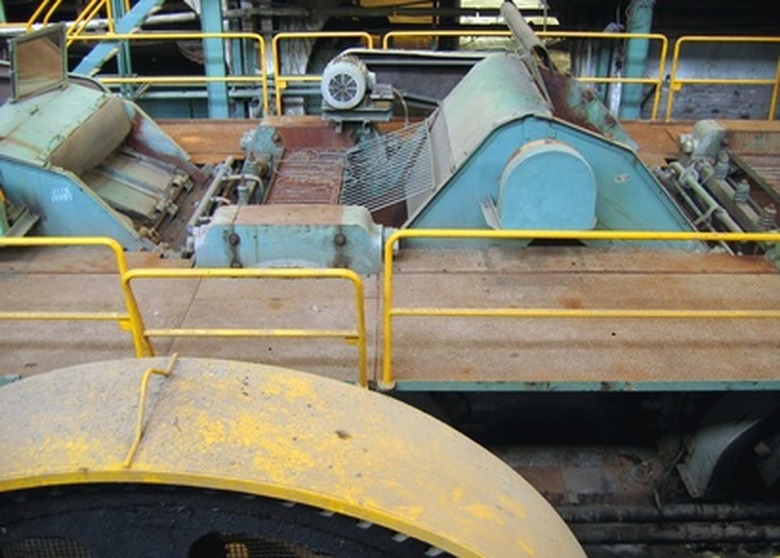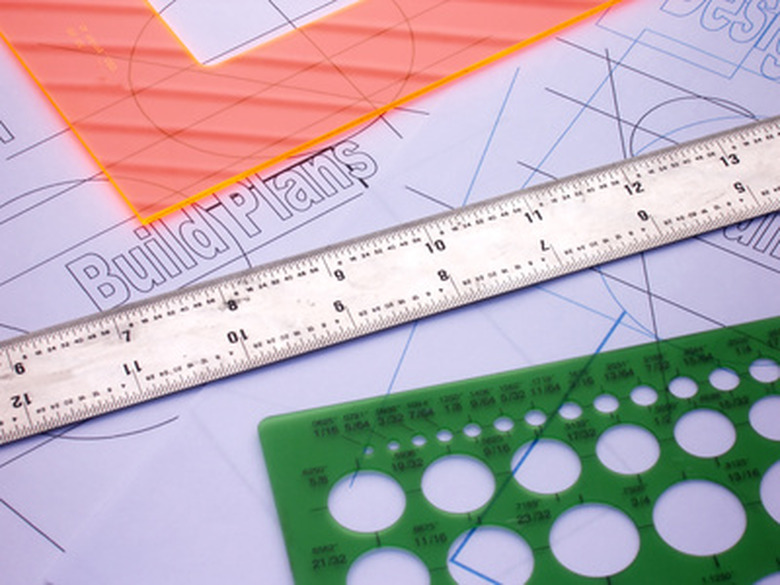The Dimensions Of A NEMA 56C
When electrical devices were in their infancy, every manufacturer set their own standards. This was as inefficient as every train company setting their own width for tracks. In 1926 trade groups merged, organized and created the National Electrical Manufacturers Association (NEMA). NEMA set standards of height, width and length for electrical devices so that one manufacturer's products could easily interchange with another's. Standard 56C defines the bolt hole spacing of mounting face plates for electrical devices, and these measurements are closely adhered to by all NEMA members.
Bolt Hole Spacing
Bolt Hole Spacing
First, four bolt holes are drilled on the mounting flange, spaced 90 degrees apart. In other words, the holes are on the corners of a square. Then, the center of the holes is placed on a circle 5.875 inches in diameter. In fractions, this is a circle diameter of 5-7/8 inch. To visualize this, first draw a 5-7/8-inch circle with a compass, or set the radius at 2-15/16 inch. Draw two diameter lines, 90 degrees apart from each other. Place the bolt holes where the diameter lines intersect the circumference line drawn by the compass. The shaft of the motor is at the center of the circle.
Bolt Hole Size
Bolt Hole Size
The size of the hole is 3/8-16. This means the bolt hole size is 3/8 inch. The thread per inch count is 16 threads per inch. This is a very common size, and most hardware stores carry the tap to cut the threads. If you are going to drill and tap the holes, Carbide Depot recommends a drill size of 5/16 inch.
Flange Mounting Defined
Flange Mounting Defined
Machine builder Richard J. Kinch says the "C" in "56C" stands for a flange or faceplate mounting system. The four mounting points are on the face of the motor, where the shaft comes out. This mounting arraignment is very useful. The motor can be mounted across its face, instead of having a platform built to hold up the weight. If you look at the cooling fan motor assembly in a computer, notice it is mounted by four screws across its face. It sits flush with the inside of the cabinet. If it did not have a "C" mounting, the motor would have to be mounted on a stand. This would take up a lot of room.
Cite This Article
MLA
Oldhand, Tony. "The Dimensions Of A NEMA 56C" sciencing.com, https://www.sciencing.com/dimensions-nema-56c-7286242/. 24 April 2017.
APA
Oldhand, Tony. (2017, April 24). The Dimensions Of A NEMA 56C. sciencing.com. Retrieved from https://www.sciencing.com/dimensions-nema-56c-7286242/
Chicago
Oldhand, Tony. The Dimensions Of A NEMA 56C last modified March 24, 2022. https://www.sciencing.com/dimensions-nema-56c-7286242/

